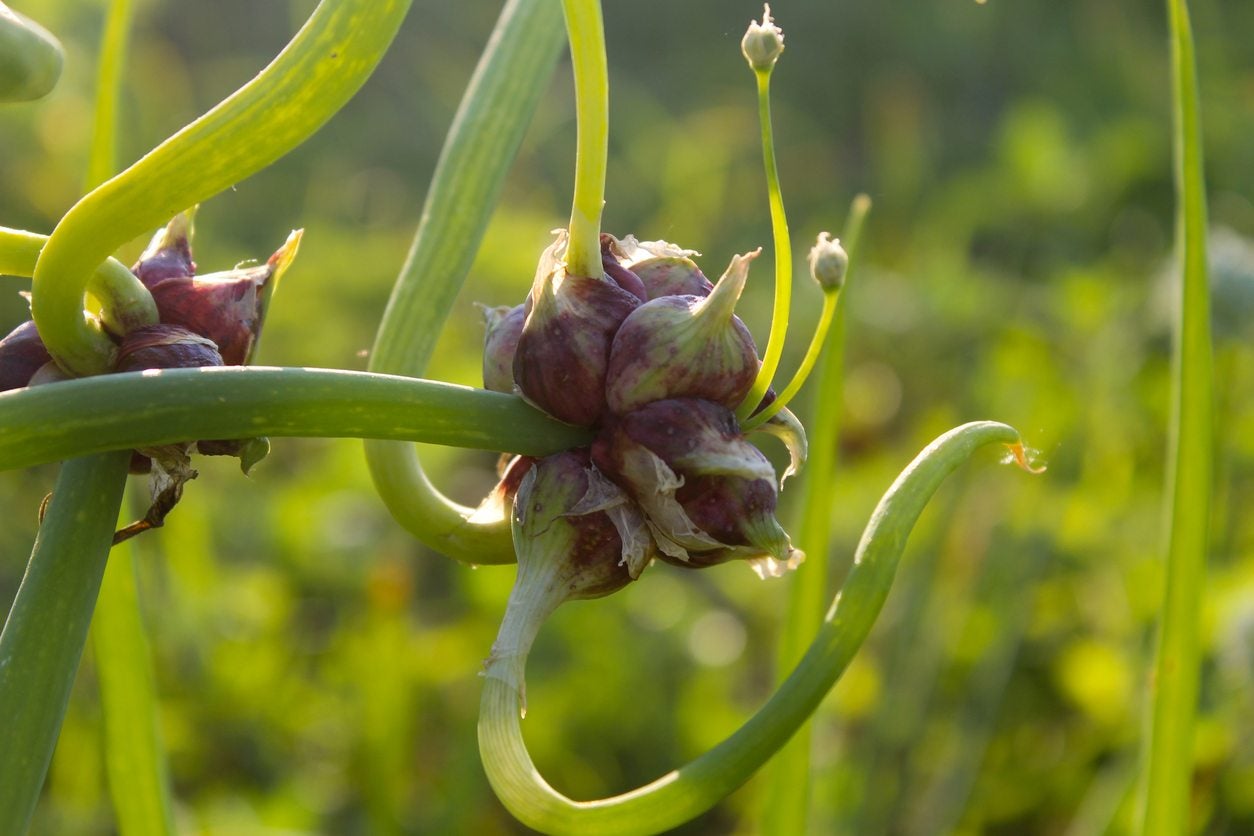Egyptian Onion Care: Tips On Growing Walking Onions


Unlike most onion varieties, Egyptian walking onions (Allium x proliferum) set bulbs at the top of the plant – each with numerous small onions that you can harvest for planting or eating. Egyptian walking onions taste much like shallots, although slightly more pungent. When the bluish green stalk gets top-heavy, the stalk falls over, creating new roots and a new plant where the bulbs touch the ground. One Egyptian walking onion plant can travel 24 inches (61 cm.) each year, resulting in up to six new plants. Egyptian walking onions are known by several names, including top-set onions and tree onions. Need more walking onion information? Read on to learn about this interesting, attractive plant.
How to Grow Egyptian Onions
Although it’s possible to plant Egyptian walking onions in spring, you won’t be able to harvest onions until the following year. The ideal planting time for growing walking onions is between summer and the first frost for a harvest the next growing season. Set the onion bulbs in the soil about 2 inches (5 cm.) deep, with 6 to 10 inches (15-25 cm.) between each bulb if you like big, pungent onions. On the other hand, if you prefer a steady harvest of green, milder onions, or if you want to use the stalks like chives, plant the bulbs 2 to 3 inches (5-8 cm.) apart. Like all their onion cousins, Egyptian walking onions don’t appreciate heavy, wet soil. However, they are easy to grow in full sun and average, well-drained soil with a pH between 6.2 and 6.8.
Egyptian Onion Care
Egyptian onions are perennial, and they will eventually walk across your garden. However, they are easy to control and aren’t considered invasive. Leave a few plants in your garden every year if you want the plants to keep walking for decades to come but pull any that walk where they aren’t welcome. Egyptian onion care is uninvolved and basically just requires keeping the soil lightly moist, but never soggy or drenched. Otherwise, thin the plant as needed and divide the mother plant whenever it becomes overgrown or less productive – usually every two or three years.
Sign up for the Gardening Know How newsletter today and receive a free copy of our e-book "How to Grow Delicious Tomatoes".

A Credentialed Garden Writer, Mary H. Dyer was with Gardening Know How in the very beginning, publishing articles as early as 2007.